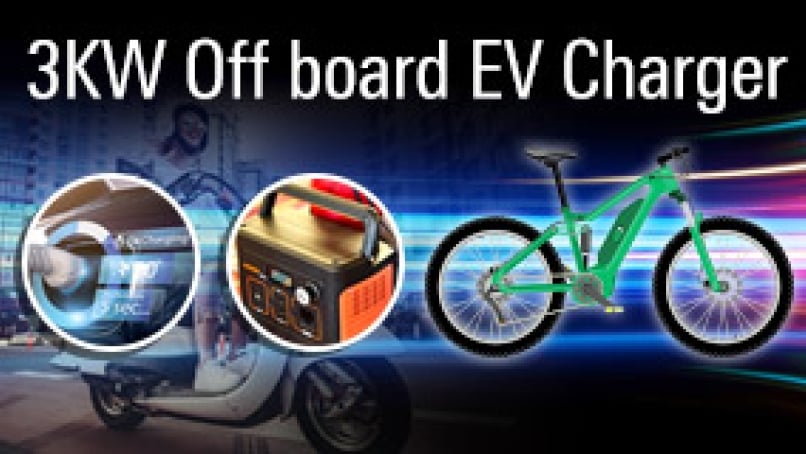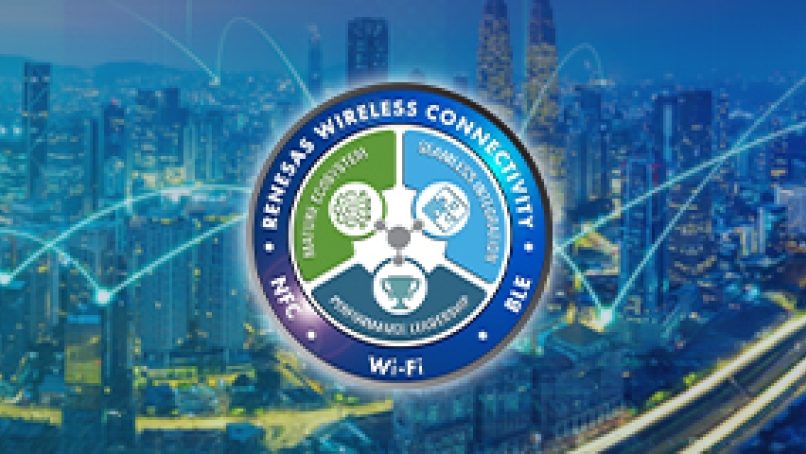The electric vehicles (EVs) are being promoted at a rapid pace due to regulation in CO2 emission, the electrification of automobiles is progressing around the world with each country focusing on electrification, such as prohibiting the sale of new internal combustion engine (ICE) vehicles after 2030. The spread of EVs also means energy that has been distributed as gasoline will be replaced by electricity, raising the importance and spread of charging stations. We will introduce in detail the market trends of EV charging stations, technology trends, and optimal semiconductors.
EV charge stations can be classified into 3 types: AC Level 1 – Residential Chargers, AC Level 2 – Public Chargers and DC Fast Chargers to support quick charge for the EVs. With the global penetration of EVs accelerating, the widespread use of charging stations is essential, and Yole Group's forecast (Figure 1) predicts that the DC charger market will grow at a compound annual growth rate (CAGR 2020-26) of 15.6%.
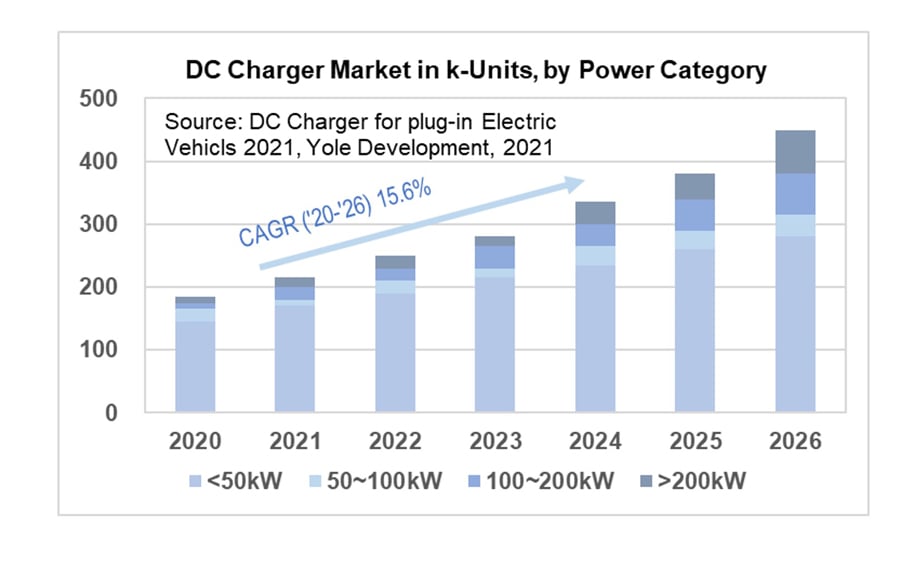
The following figure 2 shows an example circuit of a DC charging station for EVs. EV adoption is expected to reach 140-200M Units by 2030 which means that we would have at least 140M tiny energy storage on the wheels with aggregated storage of 7TWH. This would result in growth in adoption of Bidirectional chargers on the EV itself. Typically, we see two types of technologies – V2H (Vehicle to Home) and V2G (Vehicle to Grid). As EV adoption grows, V2G aims to supply substantial amounts of electricity from vehicle batteries to balance energy demands. Additionally, the technology can optimize energy usage based on the time of day and utility costs; for example, during peak energy usage times, EVs can be used to return power to the grid, and they can be charged during off-peak times at a lower cost. Figure 3 shows typical implementation of Bi-directional EV Charger.
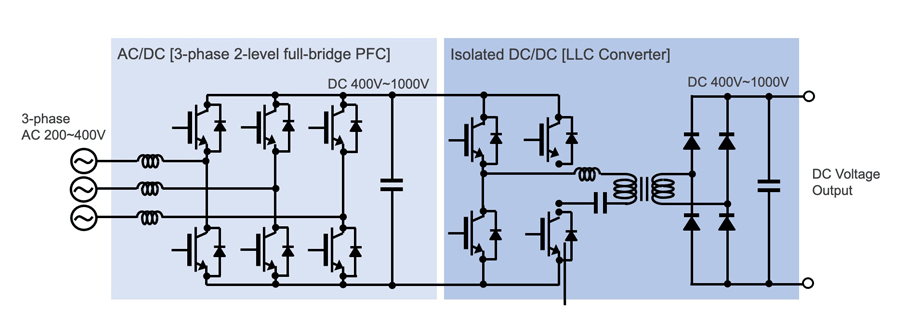
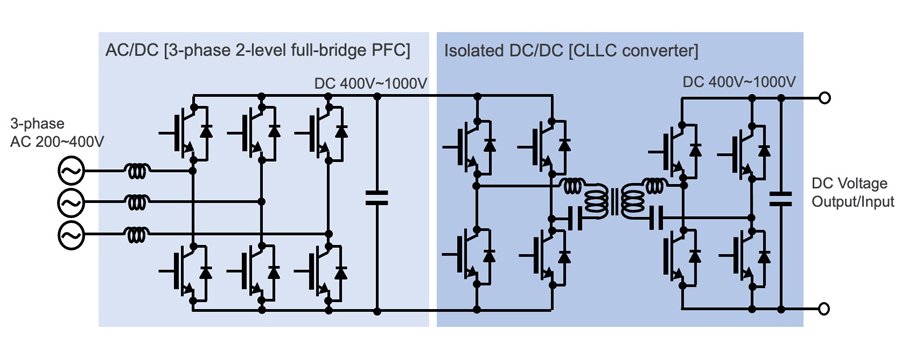
The following figure 4 shows the market trends for each DC charging method and EV drive battery voltage. Reducing the charging time is essential for EV penetration, and the shift to charging methods that support higher power and higher voltage is progressing. Also, by modularizing the internal power supply unit and allocating power according to the load, it is possible to charge multiple EVs at the same time, which is expected to eliminate charging congestion.
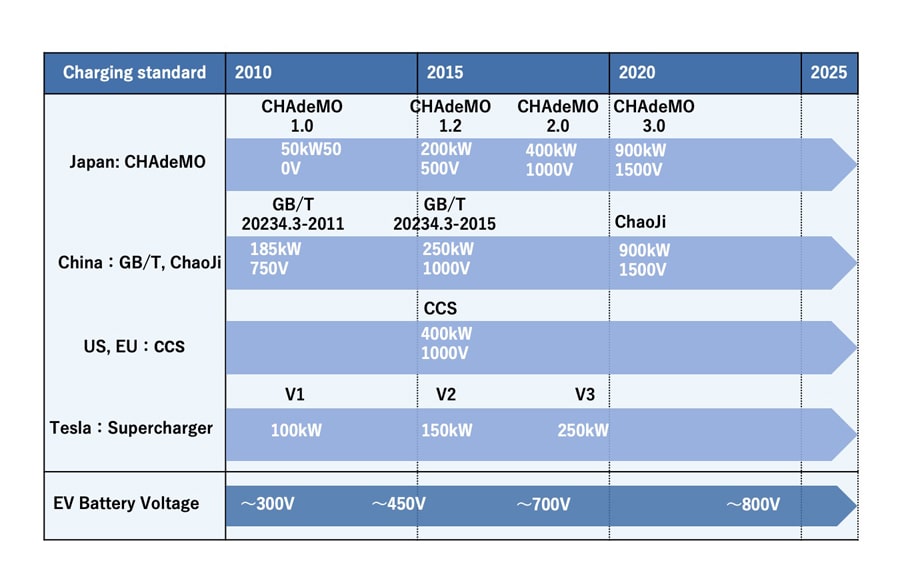
Next, we will talk about semiconductors used in DC charging stations. We can clearly see that the trend for DC charging is towards higher power and higher voltage. Hence the power semiconductors used are desired to have lower power losses. This is because at higher power delivery even if the system efficiency is the same the total power loss can be very high. For example: 98% efficient 50kW DC Charges have 1KW power loss and 400KW DC Chargers with the same efficiency would have 8KW power loss. Hence, resulting in a very large cooling system. This pushes engineers to consider New Generation Power devices to reduce power loss. In recent years, expectations for not only silicon (Si) IGBTs (insulated gate bipolar transistors) but also silicon carbide (SiC) MOSFETs (metal oxide semiconductor field effect transistors) are increasing. MOSFET-based designs allow for synchronous rectification, higher switching frequencies, less expensive cooling systems, and smaller passive components.
Table 1 shows the semiconductor trends for DC charging stations. As mentioned, power semiconductors are required to support high power and high voltage with lower losses. For microcontrollers and power management ICs, it is desirable to integrate safety and protection functions, high security, Firmware Over-the-Air (FOTA) wireless communication updates, peripheral functions, to reduce the Bill of Materials (BOM); and gate driver ICs are similar to microcontrollers and power management ICs where there is a demand to reduce BOM with high voltage support and technology for switching power semiconductors with lower power loss semiconductor.
| Product Category | Technology Trend |
|---|---|
|
|
|
|
|
|
An example application for a DC charging station is shown in Figure 5. Renesas' IGBTs not only achieve low loss: low VCE(sat) = saturation voltage between collector emitters, but also succeed in suppressing characteristic variations in the threshold voltage (Vth) that IGBTs turn on. This suppresses the misalignment of the timing of the IGBT when used in parallel with high-current control, thereby improving the imbalance during parallel connection and improving stability and safety. At the same time, it has high reliability, making it ideal for DC charging stations that require a high level of reliability. Next, Renesas' microcontrollers offer high-speed processing and high reliability at low cost. In addition, it is equipped with a high-performance timer that can handle high switching frequencies, contributing to system miniaturization and peripheral BOM reduction. Combined with a power management IC, it simplifies the design of microcontroller fault monitoring and diagnostic functions and minimizes BOM cost. Gate driver ICs have high drive capability and can drive high-power power semiconductors. Additionally, it also supports parallel drive of power semiconductors, enabling high power consumption while achieving BOM reduction.
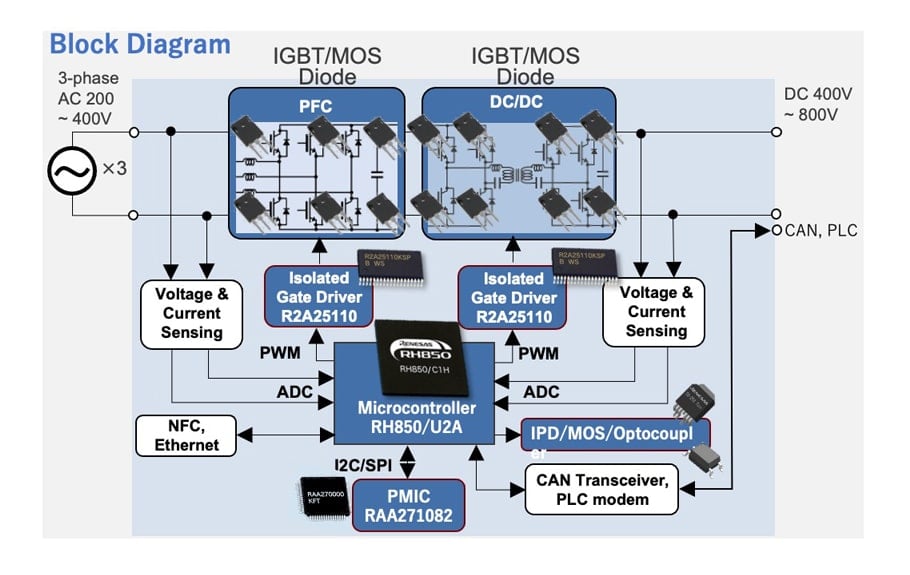
Renesas provides a wide range of semiconductors to the renewable energy, microgrid, and power electronics markets such as EVs. Renesas also offers winning combination solutions that combine semiconductors (power semiconductors + microcontrollers + analog products) and provides hardware design and software design information for each unit as well as the semiconductors. By utilizing this DC Fast Charging Station for Electric Vehicle, device selection and prototype design for each product can be omitted, shortening the development period and reducing development costs for the customer. Users can easily purchase the recommended products of this solution on the Renesas online store by clicking on this link to add to cart.
Currently, society as a whole is making a major shift in the direction of zero emissions. The expansion of the renewable energy market, the shift to EVs, and the spread of charging stations are expected to accelerate rapidly in the future. Renesas will contribute to the realization of a sustainable society utilizing renewable energy by providing semiconductors that match market trends, and providing winning combination solutions to this zero-emission society.
To view other EV charging station winning combination solutions, visit renesas.com/e-mobility.



